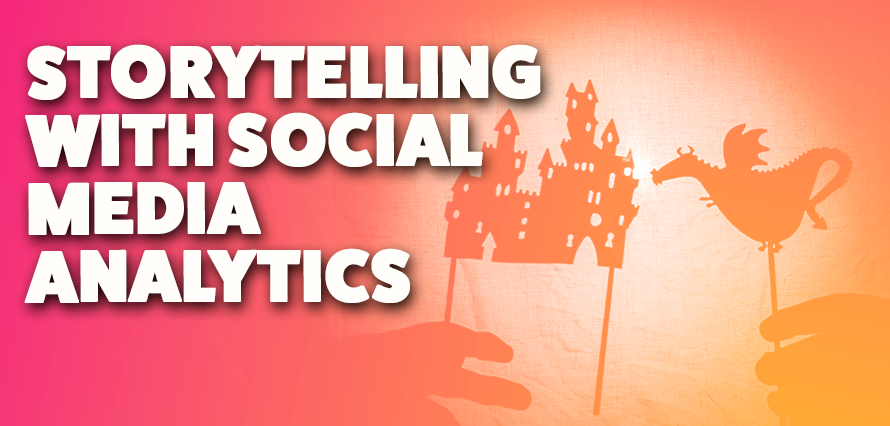August 8, 2023

In the ever-evolving world of digital communication, social media has become a treasure trove of data. From tweets and posts to likes and shares, each interaction leaves behind valuable information about user behaviour, preferences, and trends. Social media analytics provides businesses and marketers with a wealth of data, but raw numbers and charts alone often fail to captivate the attention of stakeholders. To truly harness the power of social media analytics, data storytelling has emerged as a crucial skill, allowing professionals to present data in a narrative format that communicates insights effectively and engages stakeholders.
What is Data Storytelling?
Data storytelling is the art of turning complex data into a compelling narrative that brings the numbers to life. It involves combining data analysis with effective storytelling techniques to communicate key findings and insights in a way that resonates with the audience. Data storytelling is not about manipulating the data or presenting misleading information; instead, it aims to make the data more accessible and understandable by presenting it in a coherent and engaging manner.
- Identifying the Story
Before delving into data analysis, it is essential to define the story you want to tell. A data story could revolve around identifying the success of a recent social media campaign, understanding customer sentiment towards a product launch, or even analysing the impact of social media on brand reputation. Knowing the story’s objective helps in aligning the data analysis and ensures that the narrative remains focused and impactful.
- Choosing the Right Data
With a plethora of data available on social media, it can be tempting to include every piece of information in your analysis. However, excessive data can overwhelm the audience and dilute the core message. Instead, focus on the most relevant and impactful data points that support the narrative. Choose data that is clear, concise, and directly contributes to the story you want to convey.
- Crafting a Compelling Narrative
A data-driven story needs structure and a well-defined narrative arc. Start with a captivating introduction that sets the stage for the story. Introduce the key characters (the data metrics) and the context behind the data. In the body of the story, analyse the data, and draw out meaningful insights. Use visuals like graphs and charts to make complex data more accessible and engaging.
- Appeal to Emotions
While data is essential for decision-making, emotions play a significant role in engaging stakeholders. Incorporate real-life examples, anecdotes, and user-generated content to humanise the data. By appealing to emotions, you create a connection with the audience, making them more invested in the insights and outcomes.
- Keep it Simple and Accessible
Avoid jargon and technical terms that might confuse your audience. Keep the language simple and accessible to a wide range of stakeholders. Remember, the goal is to make the data understandable and relatable to everyone, not just data experts.
- Visualise the Data
Visuals are powerful tools in data storytelling. They can convey complex information quickly and effectively. Use charts, graphs, infographics, and other visual aids to present the data visually. Ensure that the visuals are clear, concise, and aligned with the narrative.
- Incorporate Interactive Elements
Engage your audience with interactive elements in your data storytelling. Consider using interactive dashboards or online tools that allow stakeholders to explore the data on their terms. Interactive elements not only increase engagement but also empower stakeholders to draw their conclusions.
- Be Transparent and Honest
Integrity is crucial in data storytelling. Always be transparent about the data sources, methodologies, and limitations of the analysis. If there are uncertainties or gaps in the data, acknowledge them. Honesty and credibility build trust with your audience.
Conclusion
Data storytelling has emerged as a powerful technique for presenting social media analytics in a compelling and engaging format. By combining data analysis with effective storytelling, professionals can communicate insights effectively and captivate stakeholders’ attention. Whether you are presenting the success of a marketing campaign or analysing customer sentiment, data storytelling can elevate your data-driven narratives and drive better decision-making in the digital age. Embrace the power of data storytelling and unlock the true potential of social media analytics.